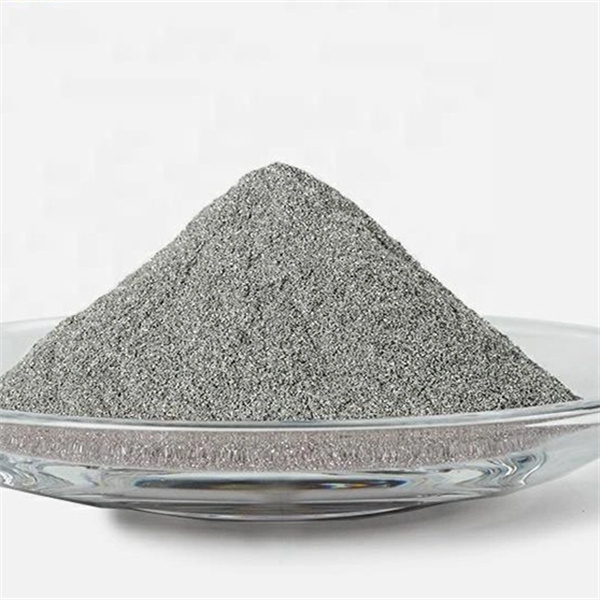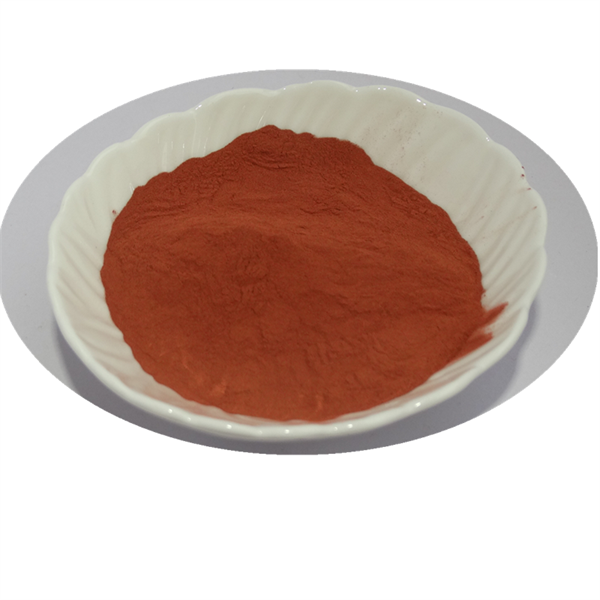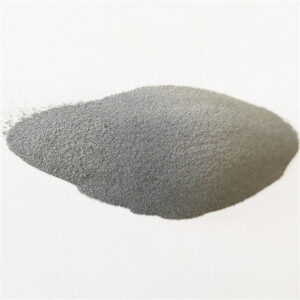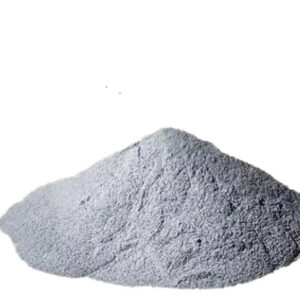钛金属粉末 钛粉末冶金技术可制造出兼具高比强度、耐腐蚀性和生物相容性的先进轻质结构件。本指南涵盖钛粉的生产方法、特性、合金策略、应用、规格、价格以及与其他金属的比较。它还包括研究方向和专家建议,介绍如何加工钛粉以优化性能。
概述
钛金属粉末的主要特性使其适用于从航空航天到医疗等各个行业:
- 在所有金属元素中强度重量比最高
- 完全生物兼容且无毒
- 抗盐水、水生和生理性腐蚀
- 从低温到 600°C 都具有热惰性
- 比同类高强度合金更具韧性
- 粉末床熔融三维打印兼容性
- 允许使用轻质复合材料和加固结构
随着钛粉末冶金技术的不断发展,现在可以利用钛的固有优势为整形外科植入物、航空航天部件、汽车系统和许多一般工程应用打印出更大的部件。

金属钛粉 组成
商业纯钛由 >99% 钛组成,含氧和铁杂质较少:
| 要素 | 重量 % | 角色 |
|---|---|---|
| 钛 (Ti) | 99.5%+ | 耐腐蚀性、强度 |
| 氧气 (O) | <0.20% | 污染物 - 降低延展性 |
| 铁(Fe) | <0.30% | 污染物 - 降低耐腐蚀性 |
| 氮 (N) | <0.03% | 污染物 - 导致脆化 |
| 碳 (C) | <0.10% | 污染物 - 降低粘合力 |
钛的高反应性意味着它永远不会以纯净的形式自然存在。但一旦提取并提纯成粉末,它就会显示出适合制造高性能部件的特殊性能。
特征和特性
- 高 拉伸强度 - 490 兆帕
- 密度 - 4.5 克/立方厘米
- 熔点 - 1668°C
- 热膨胀 - 8.6 μm/(m.K)
- 电阻率 - 420 nΩ.m
- 导热性 - 21.9 W/(m.K)
- 顺磁性,无生物毒性
- 出色的生物相容性
这些特性在很大程度上取决于粉末生产阶段的杂质控制,下文将对此进行介绍。
钛粉生产方法
阿姆斯壮工艺
- 在惰性气氛下用钠/镁还原四氯化钛
- 有助于将低间隙元素粉末用于增材制造
氢化物-脱氢(HDH)工艺
- 将海绵钛转化为球形粉末的最常见方法
- 成本较低,但氧气拾取率较高,需要优化
| 步骤 | 详细信息 |
|---|---|
| 原料 | 钛锭或海绵 |
| 水力 | 钛与氢反应生成脆性 TiH2 的过程 |
| 铣削 | 将氢化物粉碎成细小的粉末颗粒 |
| 脱水 | 小心去除 TiH2 中的氢气 |
| 调节 | 干燥、混合、粒度分布调整 |
| 最终测试 | 化学分析、粒度分布、形态检查 |
主要特点
- 颗粒大小可调至 15 微米至 150 微米之间
- 近似球形形态,有一些卫星
- 受控的低氧和氮杂质含量
- 利用稳定热处理将表面氧化降至最低程度
- 通过混合氢化物粉末可实现定制化学混合
下一节将重点介绍将钛粉整合到最终用途零部件中的一些方法。
使用的应用程序 金属钛粉
快速成型制造
- 利用激光粉末床熔融技术进行复杂几何形状的三维打印
- 航空航天和医疗植入物,如矫形膝/髋关节
- 其他机加工部件重量轻
粉末注射成型
- 紧固件等大批量净成形小部件
- 经济高效地整合到钛金属硬件中
金属注射成型
- 小型薄壁复杂钛部件
- 耐腐蚀阀门和配件
粉末冶金压力机和烧结机
- 封装钛的热等静压工艺
- 多孔结构,如骨内生面
热喷涂
- 耐磨耐腐蚀钛涂层
- 通过金属涂层修复磨损部件
新兴:使用聚合物粘合剂的粘合剂喷射三维打印技术,以及目前正在开发的超声波加固和冷喷添加技术。
接下来,我们将概述用于定制钛粉的一般规格细节。
钛粉规格
市售工业用钛粉符合既定的质量标准:
| 参数 | 典型值 |
|---|---|
| 粒径分布 | 10 μm 至 150 μm |
| 粒子形状 | 主要是球形 |
| 分接密度 | 2.2 克/立方厘米至 3.0 克/立方厘米 |
| 表观密度 | 1.5 克/立方厘米至 2.0 克/立方厘米 |
| 纯净 | 99.7% 钛含量 |
| 氧杂质 | <2000 ppm |
| 氮杂质 | <150 ppm |
| 氢杂质 | <100 ppm |
| 流动性 | 通过干涂层进行改进 |
粒子工程 - 越小越难,但越小越好。大于 100 微米则有可能出现瑕疵。
纯净 - 对特性至关重要,取决于生产路线。
粉末特性 - 与加固技术和所需的材料性能相匹配。
可进行大量定制,但需要承诺 MOQ 批次。供应伙伴关系有助于应用开发。
钛粉加工透视
处理微细钛粉会带来燃烧风险,需要采取安全控制措施:
- 使用惰性气体手套箱进行储存和处理
- 避免在点火源附近存放大量物品
- 将设备电气接地,以消除静电积聚
- 采用专用的真空和通风系统
- 热保护氢化物等活性中间体
- 鉴于材料的反应性,严格遵守安全协议
下一节将探讨钛粉的经济效益,因为钛粉的成本仍然高于传统的锻造金属形式。
钛粉价格分析
| 产品 | 价格范围 |
|---|---|
| 研发级钛粉 | 每公斤 $800+ |
| 工业级 | 每公斤 $100+ |
| 航空航天级 | 每公斤 $200+ |
| 医疗级 | 每公斤 $500+ |
相对于材料附加值而言,粉末生产的经济性在成品部件成本中占主导地位。但轻量化的潜力证明了在航空、航天和赛车移动应用中采用这种材料是合理的。
生物相容性认证对化学成分的严格要求提升了医疗产品的定价层级。高氮使粉末不适合用于骨接触植入装置。
供应合作伙伴关系和合格的长期协议安排有助于确保最佳定价,稳定出口控制海绵钛成本中可变原材料的波动。
与替代品的比较
钛的竞争对手包括钢、铝合金、镁和先进的复合材料:
| 材料 | 拉伸强度 | 密度 | 耐腐蚀性 | 生物兼容性 | 费用 |
|---|---|---|---|---|---|
| 钛合金 Ti64 | 高 | 灯光 | 优秀 | 优秀 | $$$ |
| 不锈钢 316L | 中型 | 重型 | 良好 | 公平 | $ |
| 铝 6061 | 中型 | 灯光 | 贫穷 | 良好 | $ |
| 钴铬合金 | 高 | 重型 | 优秀 | 毒性风险 | $$ |
| 镁 AZ91 | 低 | 最轻 | 公平 | 良好 | $ |
| Peek 聚合物 | 中型 | 低 | 优秀 | 生物惰性 | $$$ |
钛的优点
- 最高的强度重量比
- 完全耐腐蚀
- 经过验证的生物兼容性
- 可用的供应基础设施
钛限制
- 对设计几何形状高度敏感
- 棘手的烧损和排胶
- 反应性粉末处理需要控制
- 原料价格相对昂贵
了解这些技术和商业权衡有助于确定最受益于钛粉末冶金的理想应用。
研发展望
改进钛粉的新努力包括
合金设计
- 用于皮肤植入物的定制组合物
- 具有奇异元素混合物的高熵合金
建模
- 预测热处理过程中的微结构演变
- 粉末再利用极限的特征
AM 流程
- 粘合剂喷射印刷后进行微波烧结
- 结合冷喷增密技术的混合制造技术
粉末生产
- 无水合的静电球化
- 通过重复使用实现低成本钛粉混合物
应用
- 航空涡轮机原型的鉴定
- 电子热管理设备
- 无级变速箱

摘要
钛是强度重量比最高的金属元素,但使用传统的铸造和机械加工技术提取和制造钛一直是众所周知的难题。最近粉末冶金技术的进步改变了钛的潜能,使其成为兼具耐腐蚀性和生物相容性的轻质高强度印刷部件。现在,在医疗、航空航天和汽车应用中定制化学符合性,可以实现以前在技术或经济上不可能实现的创新几何形状。然而,处理精细钛粉的发火反应风险仍然是一个专业障碍,需要在探索采用时保持高度警惕。与专业材料合作伙伴紧密合作,既能充分发挥钛的潜力,又能降低操作风险。







